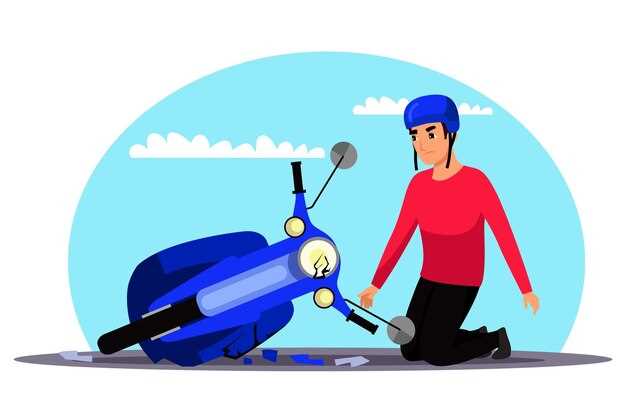

Choosing the right motorcycle battery is crucial for ensuring optimal performance and longevity of your bike. A quality battery not only powers the engine but also supports various electrical components, ensuring a smooth riding experience. However, with numerous options available on the market, selecting the ideal battery can be a daunting task for many motorcycle enthusiasts.
In this guide, we will explore the essential factors to consider when selecting a motorcycle battery. Understanding the specifications, types, and features will empower you to make an informed decision that aligns with your bike’s requirements. Whether you’re a seasoned rider or a newcomer, knowing what to look for will enhance your motorcycle’s reliability and overall performance.
With the right information at your disposal, you can navigate through the complexities of battery selection confidently. Let’s delve into the key aspects that will help you identify the perfect motorcycle battery tailored to your needs.
Choosing the Right Battery Type for Your Motorcycle

Selecting the right battery type for your motorcycle is crucial for optimal performance and reliability. There are several battery types available, each with its own advantages and characteristics that can significantly affect your riding experience.
The most common types of motorcycle batteries are lead-acid, absorbed glass mat (AGM), gel, and lithium-ion. Lead-acid batteries are traditional, cost-effective, and widely used. However, they are heavier and may require maintenance. AGM batteries offer better performance and a sealed design that prevents spills, making them a popular choice for modern motorcycles. Gel batteries are similar but utilize a silicone-based gel to prevent leakage, providing durability and good performance in extreme conditions.
Lithium-ion batteries are the newest technology in the motorcycle battery market. They are lightweight, have a longer lifespan, and offer faster charging times, making them an attractive option for riders seeking high performance. However, they tend to be more expensive than other types, so it’s essential to weigh the cost against the benefits.
When choosing a battery type, consider your motorcycle’s specifications, riding style, and frequency of use. For instance, if you frequently ride in varied weather conditions or longer distances, an AGM or lithium-ion battery may provide the reliability you need. Additionally, check your owner’s manual for recommendations on compatible battery types to ensure proper fit and functionality.
Lastly, think about your maintenance preferences. If you prefer a low-maintenance option, look for sealed batteries like AGM or gel. Assessing these factors will help you select the ideal battery that meets your motorcycle’s requirements and enhances your overall riding experience.
Understanding Battery Specifications and Ratings

When selecting the ideal motorcycle battery, understanding specifications and ratings is crucial. These elements dictate the battery’s performance, longevity, and suitability for your motorcycle.
One of the primary specifications to consider is the Cold Cranking Amps (CCA). This rating indicates the battery’s ability to start the engine in cold temperatures. Higher CCA means better starting power in challenging conditions. Ensure the CCA rating meets or exceeds your motorcycle’s requirements for reliable performance, particularly in colder climates.
Next, look at the Amp Hour (Ah) rating, which measures the battery’s capacity to deliver current over time. A higher Ah rating translates to a longer runtime before needing a recharge. Selecting a battery with adequate Ah ensures that your motorcycle’s electrical components, such as lights and ignition systems, receive sufficient power.
Another essential factor is the Voltage rating. Most motorcycles require a 12-volt battery, but verifying your motorcycle’s voltage specifications is vital. Using a battery with the correct voltage prevents electrical issues and ensures optimal performance.
Consider the physical size and terminal configuration of the battery as well. Different motorcycles require specific battery sizes to fit within their compartments. Additionally, the arrangement of the terminals can impact installation and connectivity to the motorcycle’s electrical system. Ensure compatibility to avoid installation difficulties.
Finally, familiarize yourself with battery technology. Common types include lead-acid, absorbed glass mat (AGM), and lithium-ion. Each type has its advantages and disadvantages regarding weight, maintenance needs, cost, and performance. Research the best option for your riding style and motorcycle model.
In summary, understanding these battery specifications and ratings equips you with the knowledge needed to make an informed decision. Prioritize CCA, Ah, voltage, size, terminal configuration, and technology to choose the best battery for your motorcycle.
Maintenance Tips for Prolonging Battery Life
To maximize the lifespan of your motorcycle battery, consider these essential maintenance tips. Regularly checking and maintaining the battery can significantly enhance its performance and longevity.
First, ensure proper charging. Use a quality battery charger compatible with your battery type. Overcharging can damage the battery, while undercharging can lead to sulfation, which decreases capacity. Maintain the charge level between 12.4 to 12.7 volts; this is optimal for lead-acid batteries.
Next, keep the battery terminals clean and tight. Corrosion can build up on the terminals, hindering electrical connections. Regularly inspect the terminals for signs of corrosion and clean them using a mixture of baking soda and water. Always ensure the connections are tight to prevent vibration-related damage.
Another important tip is to store your motorcycle in a stable environment. Extreme temperatures can adversely affect battery chemistry, leading to reduced lifespan. Whenever possible, avoid leaving your bike exposed to extreme heat or cold for extended periods.
Additionally, check the electrolyte levels frequently if you have a conventional lead-acid battery. Ensure the electrolyte covers the plates. If levels are low, add distilled water to prevent damage from exposure to air.
Finally, consider investing in a battery maintainer or trickle charger if your motorcycle will be stored for a long time. These devices keep the battery at an optimal level without overcharging, thus helping to maintain health during periods of inactivity.
By following these maintenance tips, you can significantly extend the life of your motorcycle battery and ensure reliable performance whenever you hit the road.
